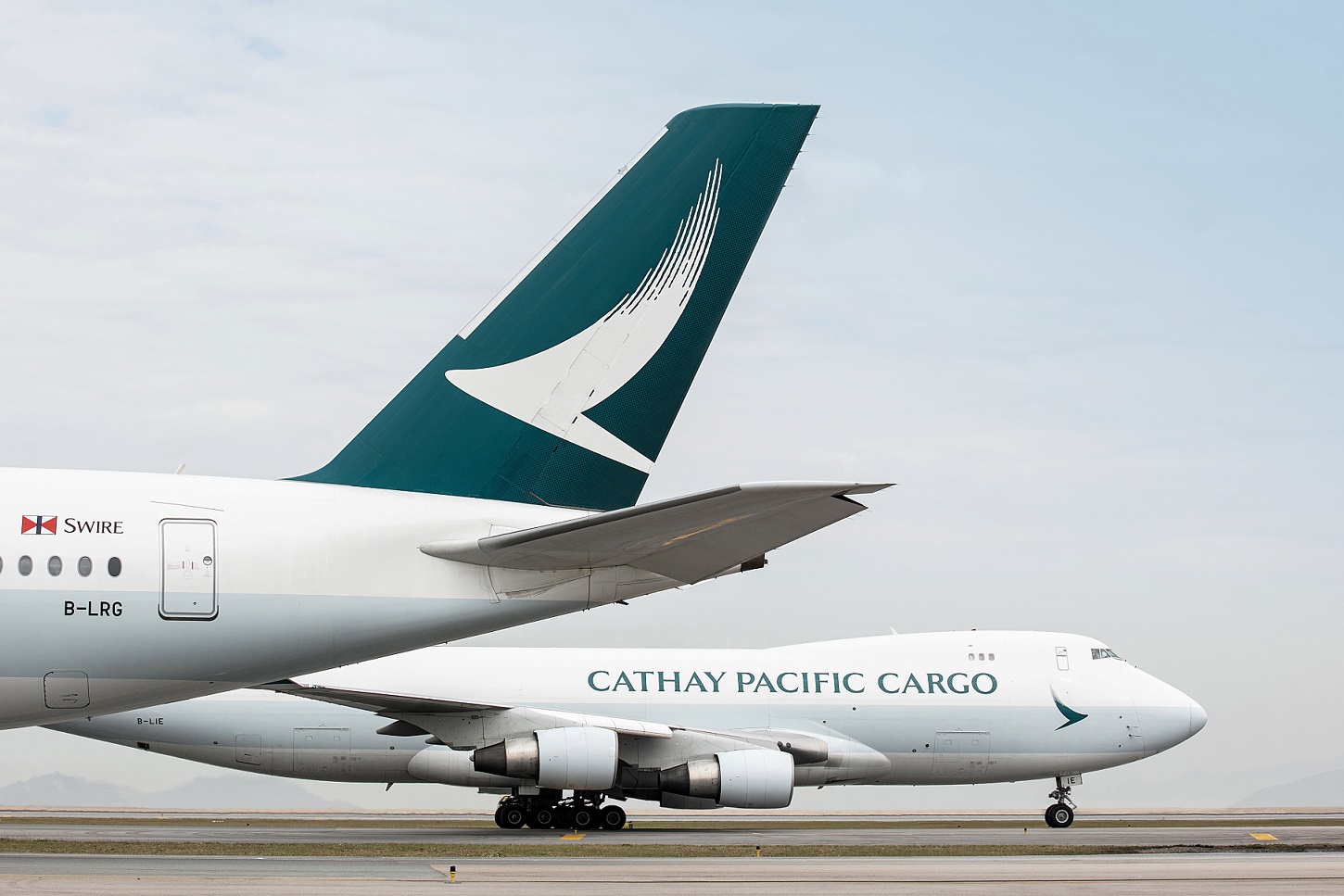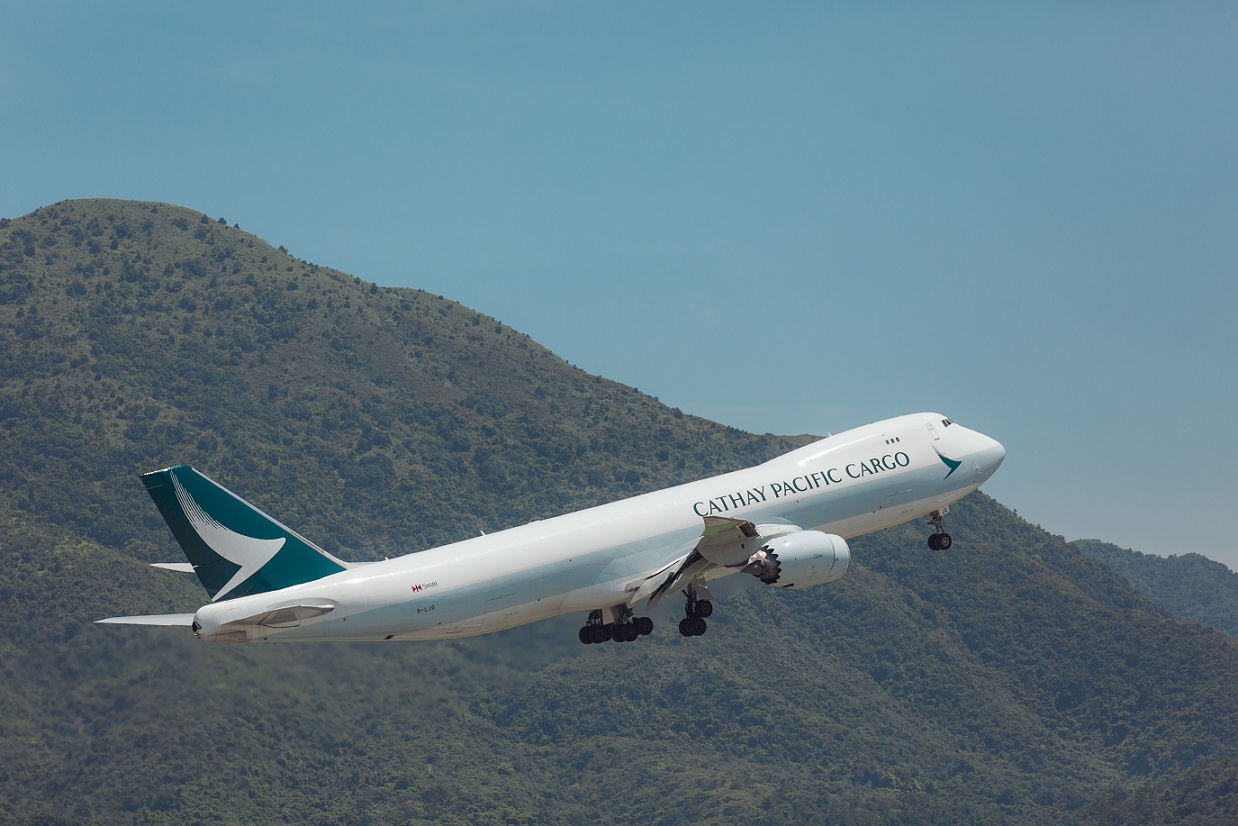Cathay Pacific Cargo looks ahead to a digital future
04 / 11 / 2022

Tom Owen. Source: Cathay Pacific Cargo
Cathay Pacific Cargo overcame stiff challenges in 2021 to help home hub Hong Kong regain its global crown as the number one airport for international airfreight.
Strict air crew quarantine requirements in 2021 impacted airfreight capacity and tonnages, but Cathay’s cargo arm deployed 20 B747 freighters, preighters and cargo-only passenger aircraft to keep supply chains flowing.
It also helped the Cathay Pacific group return to profitability in the second half of the year.
Tom Owen, director of cargo at Cathay Pacific, says of the cargo airlift: “It reinforced our belief in the importance of a combination carrier strategy where you have a passenger widebody network and a cargo freighter fleet working interchangeably. Having a diversified approach proved very helpful for Cathay Pacific in the last years.”
Owen recalls that April 2021 was the most severe month in terms of Covid-related restrictions: “The situation improved from May onwards, with cargo demand increasing as we entered the peak for the second half. In terms of cargo capacity, the second half of 2021 was actually very strong.”
In 2021, the carrier operated 8,000 pairs of cargo-only passenger flights with B777s, A350s and some A330s, plus six B777 passenger aircraft with the seats stripped out.
In addition to its own freighters, Cathay also had charter flights from the group’s Air Hong Kong freighter arm to meet increased demand.
“We carried a range of daily necessities: fresh products, vaccines, electricals and pharmaceuticals. We supported Hong Kong during those difficult times. We were also doing our bit in supporting trade.”
Owen adds: “We reached around 57% of pre-pandemic cargo flight capacity in 2021 despite the fact that the passenger side’s ASK (available seat km) was down by some 92%.”
Digital investment
Despite those enormous pressures, the cargo division’s digital transformation programme, launched in 2019, continued at a rapid pace with a string of innovations throughout 2021 and into 2022.
“Our digitalisation programme accelerated, driven by customer needs as they demanded new digital solutions. The transitioning is faster than it was and includes the whole range of cargo operations, from traditional sales and pricing, right through to services and operations.”
The airline is digitalising its rates and the ability to sell through its online Click and Ship booking engine, rather than via paper-based distribution channels.
“We have been working similarly on the sales side, so customers can book through third-party distributors such as WebCargo and cargo.one and others as they appear.”
Over the next 18 months the carrier’s digitalised rates will become available via APIs in the freight forwarders’ own systems.
On the services side, Cathay is working on smart ULDs: “To understand where ULDs are in our network but also where they are in their journey which is very important.”
Cathay has its own Ultra Track environmental monitoring system using Internet of Things devices and Bluetooth to connect ULD sensors as the cargo continues its journey.
Cathay is also automating other processes, to substitute paper for instant data to furnish a range of digital dashboards for staff.
“We are bringing data to the surface for cargo and allowing our teams to use it more rigorously than before.”
The cargo division has an integrated database bringing together information flows to create dashboards.

Source: Cathay Pacific Cargo
Staff can “interrogate, question and correlate certain data to show users what is actually happening, whether it is in sales or services across the Cathay Pacific networks”.
While reducing costs, it allows the airline to be more efficient in delivering cargo services and making better choices: “Decisions are made less on feel and more on information,” says Owen.
He adds: “These are the kind of things that will continue to be more and more important, and we are trying to lead the way.”
The digitalisation programme allows Cathay to grow and expand its cargo operation without having to ramp up overheads to the same degree than in the past, because it can use data more effectively.
More work to be done
While proud of the digital progress made in airfreight, Owen remains of the view that the cargo industry “still has a long way to go” compared with the passenger business.
He contends that the average passenger airline website has more digitalised options for the customer journey than a comparable cargo website.
He highlights the work by IATA’s Cargo iQ and the airlines, including Cathay, to extract data and use it in a more constructive way for decision-making.
But he also makes the point that in different parts of the world a significant amount of cargo operations are paper-based and use manual systems.
“When you work with partners across the world everybody’s got different levels of digitalisation, so it can get quite complicated because we don’t have these holistic systems that speak to each other.
“I think there is a long way to go in harmonising some of the carrier technology and in reaching a common set of standards. It is really important and that is why we participate in IATA’s ONE Record.”
Looking at the wider supply chain, Owen says that airlines, forwarders, ground handlers, Customs and warehouse operators have the same digital aspirations in talking to one another.
“The supply chain has a lot of interested parties which have very different levels of digital sophistication, shall we say.
“We need to keep going but there has been a lot of progress, absolutely, in the industry and also at Cathay Pacific.”
Turning to 2022, Cathay is currently operating a full freighter schedule again despite another tightening of quarantine restrictions at the start of the year for cockpit crew on cargo-only passenger flights and freighter services.
“We had to again reduce substantially our cargo capacity in January 2022. We suspended all long-haul freighter operations and focused on regional services right up until May 2022, in a bit of a parallel to what happened in 2021.”
As crew restrictions were eased to a degree from May 2022, Cathay was able to increase progressively long-haul freighter flights.
Ongoing lockdowns in Shanghai, both at the mainland China airport and deepsea port, plus the surrounding factories for exported goods, also impacted volumes and services.
“Our capacity levels right now [August 2022] are approaching 60% of pre-Covid capacity and by the end of this year, we would expect to be at about two-thirds of our pre-Covid cargo capacity in terms of passenger widebody and freighters.
While Cathay is operating a full freighter schedule, passenger operations are at around 16% of pre-Covid levels, given the restrictions still in place in Hong Kong.
A capacity increase will be needed. The rapid growth in e-commerce will remain as people continue to buy online, as they did during the global lockdown.
Online purchases might not be at the same high level as then, but e-commerce is on a different base than pre-Covid and will support Cathay’s quest to continue being an important player in the sector.
“We already carry a significant amount of e-commerce for freight forwarders, and it reinforces our belief that Hong Kong, both ex-China and into China, is a very good place to take advantage of those traffic flows.”
Partnership power
Cathay Pacific Cargo’s joint business agreement with Lufthansa between Frankfurt and Hong Kong, signed in 2016, has now expanded with the entry of Swiss WorldCargo at the end of May this year, between Hong Kong and Zurich.
Owen says that the agreement gives cargo customers more direct connections, flexibility and time savings.
From August, the agreement added freighter flights to Amsterdam, Paris, Milan, London and Manchester.
Additional cargo capacity from Hong Kong to the rest of Europe is planned for later this year.
In other links, Owen highlights a “very good partnership” with LATAM Cargo as a gateway to South America with better connectivity between Chile and South American points generally to Hong Kong and the Chinese mainland.
“We are moving Ultra Track onto LATAM Cargo’s metal so customers have a seamless service all the way through to their final destination from South America to wherever it is headed over Hong Kong or vice versa.”
Peak season perishable shipments from November to January will provide capacity for South American fruit producers into Hong Kong and then to Asian destinations and the Chinese mainland.

Source: Cathay Pacific
Cathay also has a partnership with Avianca in non-competing areas of Latin America.
“There have been some big developments this year. I think it shows Hong Kong’s importance as a gateway point into areas of the world which are very far away from Hong Kong but which we can connect with LATAM Cargo and Avianca.”
One long-term challenge facing many industries, including aviation and its cargo offshoot, is sustainability. Cathay is ready for that challenge, says Owen.
One aspect of sustainability is wildlife protection of endangered species, with Cathay fully compliant with international treaties and its own cargo ban on accepting shark fins.
Other environmental measures include recycled plastics for wrapping cargo, but also a commitment to be net zero by 2050, also raising the use of sustainable aviation fuels (SAF) to 10% by 2030.
“We are a founding member of the aviation climate task force and in April 2022 we launched a blended-SAF initiative with DHL Global and Kintetsu Worldwide Express on our freighters and cargo-only passenger services, and we will keep expanding that.
“Hong Kong International Airport has got SAF bunkers, and the challenge will be the future global availability of SAF in quantities we need. We are committed to working with our suppliers and now have an investment in Fulcrum which is a biofuel SAF producer in the US.”
The scale of SAF production is limited at present, which means that carbon offsetting has become important in making the balance.
“The sea change is going to be SAF but that will take some time. There will be new technologies coming along and new production freighters later this decade are very interesting in terms of reduced fuel burn.
“We have got our own carbon offset scheme, Fly Greener, allowing forwarders to pay for their cargo offsets if they wish to. It is transparent and conducted between the airline, forwarder and shipper if requested.”
The offsetting option is available through Cathay’s own Easy Cargo booking platform and will soon be available through all Cathay’s online booking portals.
Optimistic outlook
While local and mainland lockdowns are easing, the war in Ukraine and its knock-on effect on energy costs for households and factories worldwide is clouding forecasts for air cargo demand. Does Owen remain optimistic?
“My sense is that the effects are not universal across the world, because Hong Kong, Asia and the Chinese mainland are historically very different types of economies, developing at different rates than in Europe and the US.
“For example, transatlantic capacity is back to where it was and therefore yields are being hit, but in other parts of the world that isn’t the case and there is still capacity to be made up since Covid.
“There are certain products that were priced out of the market, for example perishables, because of the carriage of PPE and e-commerce, but they will come back to airfreight again as they can now get access.”
He continues: “Is the market going to get weaker and softer than it was in 2021 and 2022? The answer is yes because the business is cyclical and will be impacted by what is going on in the economies.
“But is it mostly bad news? No, not at all. We remain cautiously optimistic. Hong Kong has reasserted itself as the top logistics airport.
“With the opening of Hong Kong’s third runway and with further logistical infrastructure developments led by the airport authority, Cathay Pacific is in a great position to support the growth of exports and imports in the Chinese mainland and Southeast Asia.
“The geography is important. We are a global carrier and our core strengths are in this part of the world where we are closest to our markets.”
He concludes: “Airfreight has proven itself a very effective way to support constrained supply chains and that will continue for a fair bit yet. Plus, there are new [consumer] products coming, so it is not all doom and gloom.”
Cathay Pacific remains positive on cargo despite latest decline














